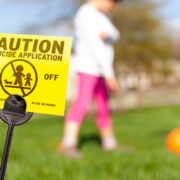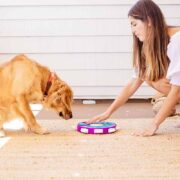It has been a weird year and a half for all of us, including our dogs! New puppies born or adult dogs adopted during the pandemic have had limited access to the world because of lockdowns. These “pandemic puppies” generally have had limited dog socialization and exposure to people, other dogs, and new situations.
This applies to pre-pandemic dogs as well. Even if your dog was once comfortable seeing new people or going places, many older dogs have adjusted to a quieter life during the pandemic. As the world reopens at various stages, it’s important to be slow and intentional when re-socializing our dogs as we adjust to a new normal.
Dog Socialization & Planning For Visitors
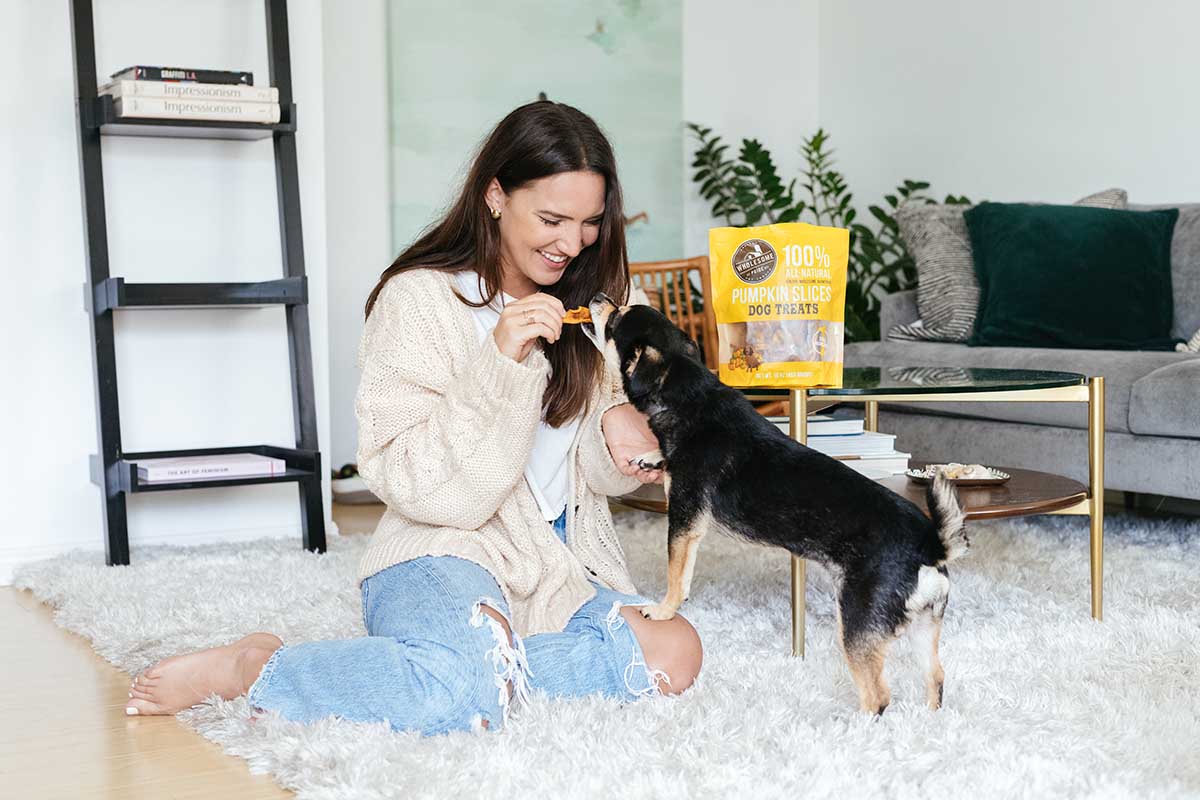
If you are a dog owner who strictly adhered to stay-at-home orders, it’s likely your dog hasn’t had a variety of people coming in and out of the house. For puppies brought home during the pandemic, this may be something they have never experienced!
Guests and visiting family members can be overwhelming for dogs, especially dogs and puppies who are nervous, shy, or protective. These pups may respond reactively or defensively to new people coming into the home.
On the other hand, highly social dogs may be over-stimulated by visitors entering the home. In both cases, barking, jumping, and lunging behavior is not something we want to encourage as it can lead to people, or dogs being injured.
Know how to handle your dog around guests
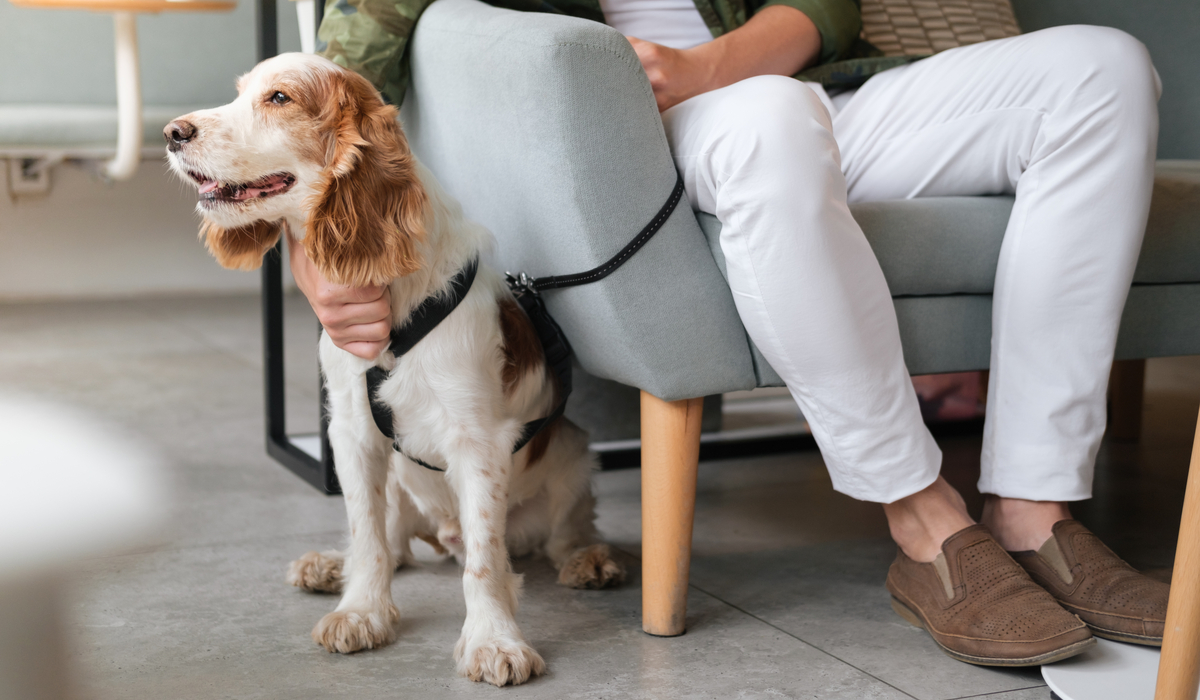
Set your new dog up for success with visitors coming into your home by working with your dog during these interactions. It’s a good idea to leash your dog and have lots of treats ready. If you often have unexpected visitors stopping by it’s helpful to keep a leash and treats stored near your door.
When the doorbell rings, get your dog’s attention with treats. Praise your dog for engaging with you instead of barking or lunging at the door. Wait to answer it until your dog is calm.
If your dog is shy or anxious don’t force them to engage with people coming into your home. Your dog needs to have positive experiences with people in order to gain confidence. Adding pressure by forcing them isn’t going to do that. Advocate for your dog and explain to visitors what your training plan is.
For example, you might want guests to completely ignore your dog, or wait until your dog approaches before engaging. Being praised and treated for being calm near people, but not having to engage, can be a big confidence boost for shy and nervous dogs.
If your dog is social but overstimulated
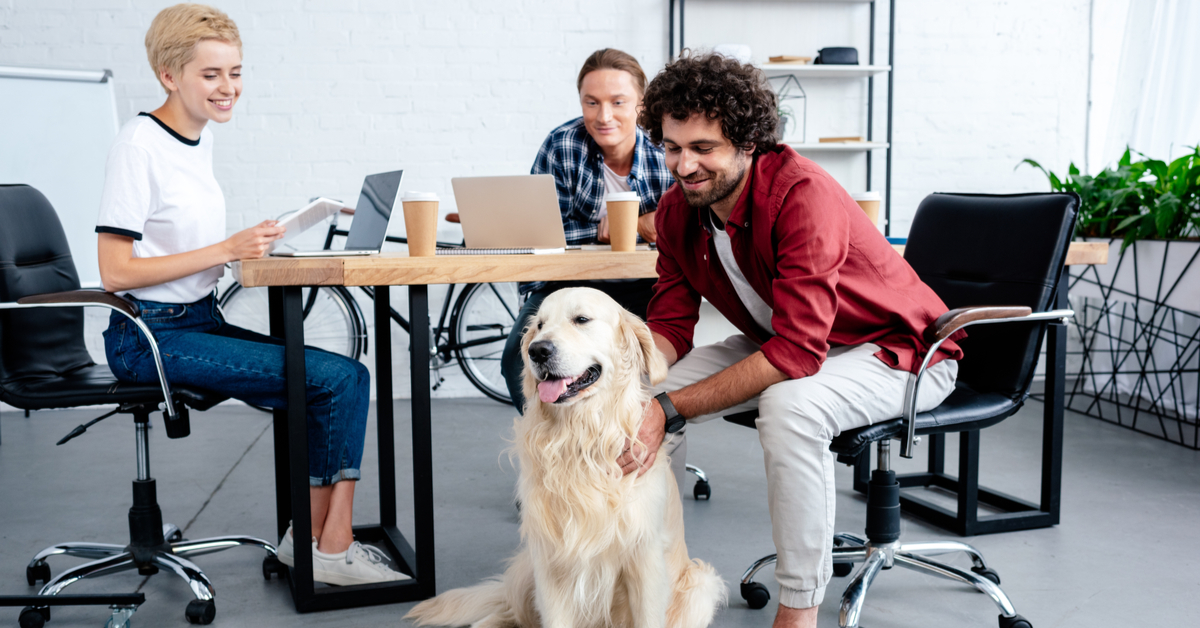
On the other hand, if your dog is social and really enjoys meeting people who come into the home you can also ask visitors to throw a toy for your dog in the house, ask your dog to sit, shake, or other cue your dog knows and to treat your dog for doing so. For dogs who like people this kind of intentionally structured engagement can help to curb overexcited jumping and barking.
While you have visitors in the house, keeping your dog leashed to you with a pocket full of treats is a great way to help your dog make good decisions about staying close and being calm while guests are over. Be sure to praise and treat your dog for settling next to you, and any other calm behavior.
If guests stay for a long time and your dog is getting tired or overwhelmed it’s usually a time for your dog to have a break in another area of the house with a chew or treat-filled toy to wind down.
Similarly, if you’re not going to be able to focus on working with your dog, it can be helpful to put your dog in another part of the home. In a crate on their calming dog bed, or behind a baby gate are good spots. Give your dog a safe chew or hard rubber toy bone stuffed with (dog safe) peanut butter, dog food, or treats to occupy them while you engage with your guests.
Rebuilding What You Lost
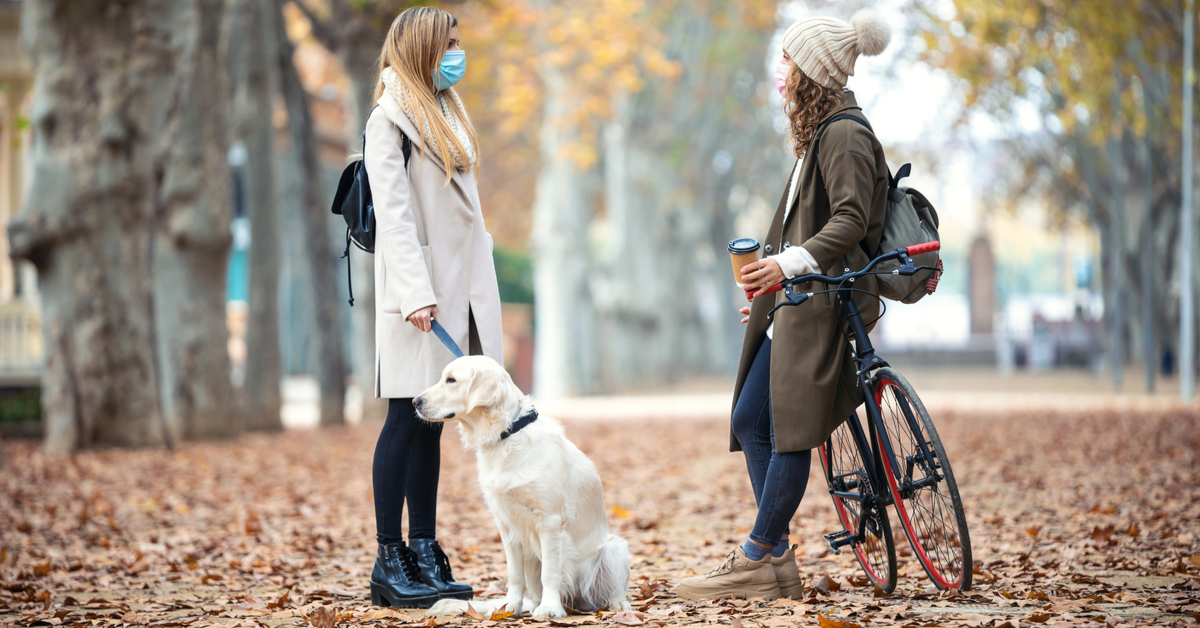
If you’re vaccinated and heading back out into the world it’s likely you want to bring your pooch with you. Remember that as you’re bringing your dog along that what feels like getting back to (somewhat) “normal” to us might be completely new for our dogs. Going into pet stores or walking on crowded sidewalks is something that your dog may not have done before or hasn’t done in a long time.
As you’re bringing your dog out into the world to see new sights the key is going slow and intentional about where and when you bring your dog. Be sure to go at your dog’s pace and comfort. When training your dog sometimes less is more.
A great way to help your dog get resocialized to the world is by making short visits to pet-friendly locations that your dog maybe hasn’t been to for a while such as a dog park, pet supply shops, a friend’s house for a puppy playdate, daycare, or your vet clinic.
However, if your dog is nervous you can start by first going outside the location, walk around, treat your dog for any engagement with you and then leave without going inside. Save going into the pet supply shop for another day, your dog doesn’t have to do it all at once.
A short and fun outing will be more meaningful to your dog’s readjustment to the world than a long outing where they get overstimulated, scared, or overwhelmed.
When taking your dog on post-pandemic outings, don’t plan to stay out with your dog all day as you ease back into socializing in the world. The more tired your dog gets, the more overwhelmed they are likely to become and the more they are likely to struggle. Be mindful of their body language.
Note: Before heading out make sure that your dog is up to date on all of their vaccinations. Veterinary appointments have been more challenging to get, and your dog might be overdue for vaccines without you realizing it.
To Socialize, Distance Is Your Dog’s BFF

When working with a dog who is over-aroused and overstimulated from fear, reactivity, or excitement, distance is going to be your best friend.
As the world begins reopening, it’s important not to overwhelm your dog by trying to do too much too soon. The goal should be whenever possible to keep your dog at a distance they are comfortable with, meaning at a distance from other dogs or people where they are calm, able to eat treats, respond to cues (like sit, wave, or any other skill/trick your dog knows).
If your dog isn’t able to take treats or look away from something, be it a person or another dog, a skateboard, or a bicycle, it means your dog is “over threshold.” When a dog is over threshold, it’s not possible for them to learn new things.
Don’t rush
When going out with your dog you’ll need to create distance for them to focus on learning something new in a stressful new environment or situation. It’s important to start at whatever distance your dog is comfortable. For some dogs that will be across the street, whereas other dogs might need to be a football field away from whatever they are fixated on.
It can feel tempting to rush right into pushing your dog closer and closer to what they are reacting to, but with dog training, slow and steady intentional work is what will help your dog most in the long run.
Start to teach your dog at the distance your dog is comfortable and slowly, over time, each training session move slightly closer. If you find yourself too close, meaning your dog can’t focus on you and instead is pulling, barking, or lunging it’s just a sign you’ve gone too close. Move backward for this session and the next training session as well, then slowly move closer at your dog’s pace.
Train. Don’t Correct.
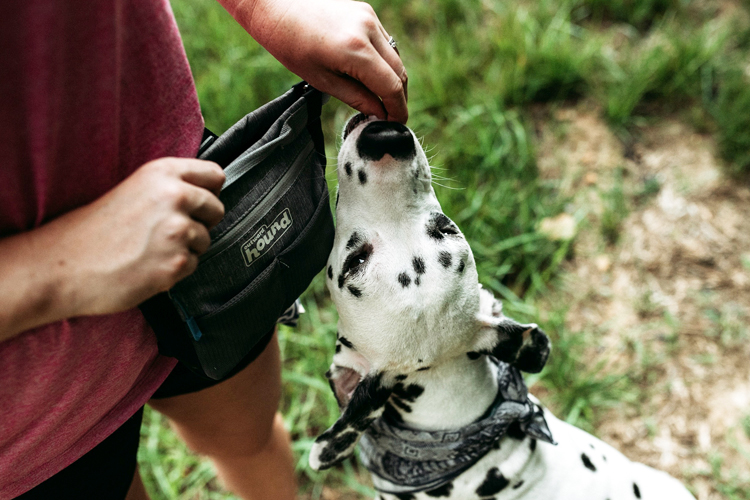
If you have a dog who is overwhelmed, overexcited or otherwise overstimulated with a return (or entrance) into a “normal” world that’s ok! We’re all feeling a little bit strange in this new normal. As tempting as it might be to want to suppress or punish your dog’s behavior, it’s important to remember that the behavior your dog engages in (barking, lunging, jumping) that might embarrass you is very natural for our dogs.
Punishing your dog for reacting naturally to a situation won’t help change your dog’s feelings of being fearful or overwhelmed at the sight of another dog or person. Punishment includes yelling, collar pops/corrections, alpha rolls, etc. These coercive/corrective training methodologies are shown to be harmful to your relationship with your dog and don’t change your dog’s emotional response.
Positive association is the way to go. Not only do positive reinforcement approaches to dog training feel better to dogs and people, but they have also been shown to be more effective.
The American Veterinary Medical Association notes: “A major problem with using punishment is that it suppresses behavior temporarily but does not necessarily modify the underlying cause of the behavior.”
The American Veterinary Society of Animal Behavior cites a new study proving positive reinforcement methods are more humane and successful than professional dog trainers who utilize punishment approaches.
When you start going places with your dog and feel frustrated, that’s an indication that it’s time to take a break, not that you should punish your dog.
Get Support
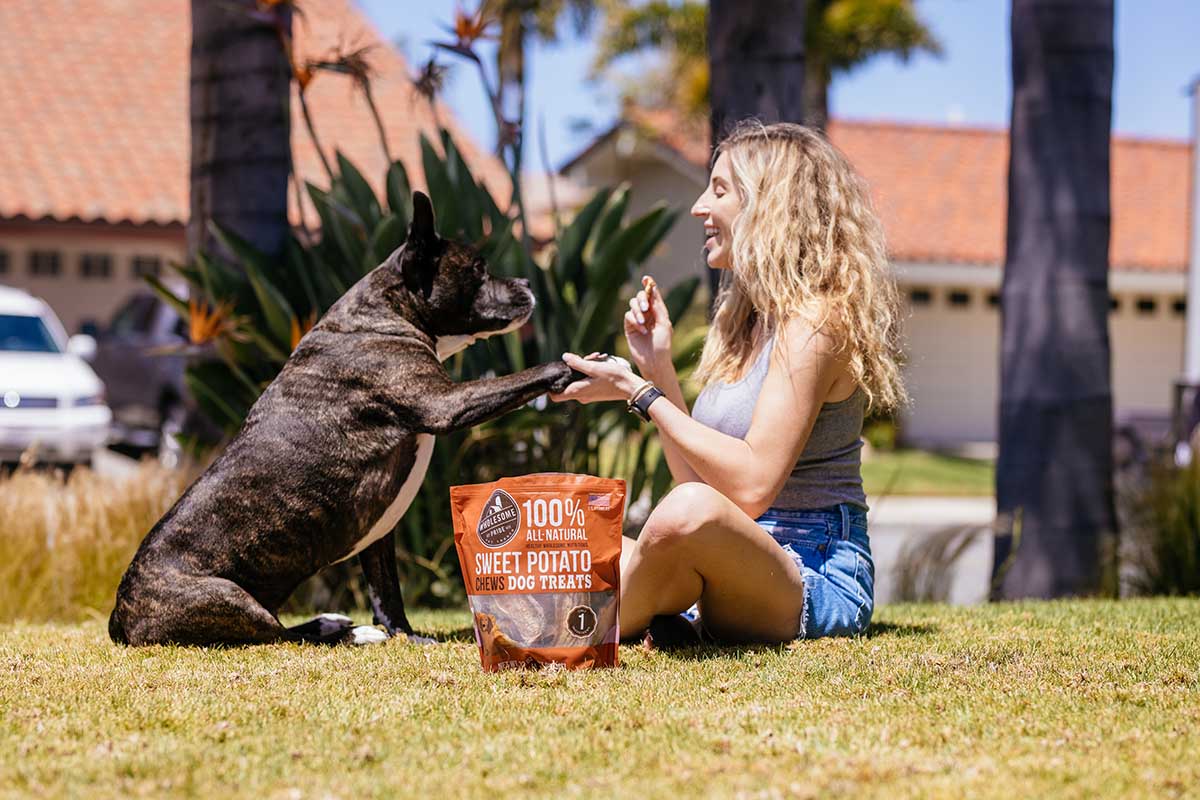
If you have a dog who had limited socialization during the pandemic, or if you’re concerned about how your dog will handle going to new places, don’t wait until you are having a problem with your dog to seek out support. Working with a positive reinforcement dog trainer or behaviorist can help you to get ahead of any challenges in your dog’s life by giving you the skills to support your dog.
Working individually with a dog trainer around behavioral challenges you are seeing can be helpful. Taking any kind of training class (anything from basic obedience skills to puppy socialization classes to trick training or an introduction to agility class) is also a great opportunity for you and your dog to build engagement with each other. This can help strengthen your relationship and communication which can help with a variety of situations.
Some trainers are holding more of their classes outside and socially distanced. Even if you aren’t yet feeling comfortable going to training classes in person with your dog, many trainers are offering virtual classes to help you and your dog communicate better together and get ready to reenter the world when you feel ready to do so.
